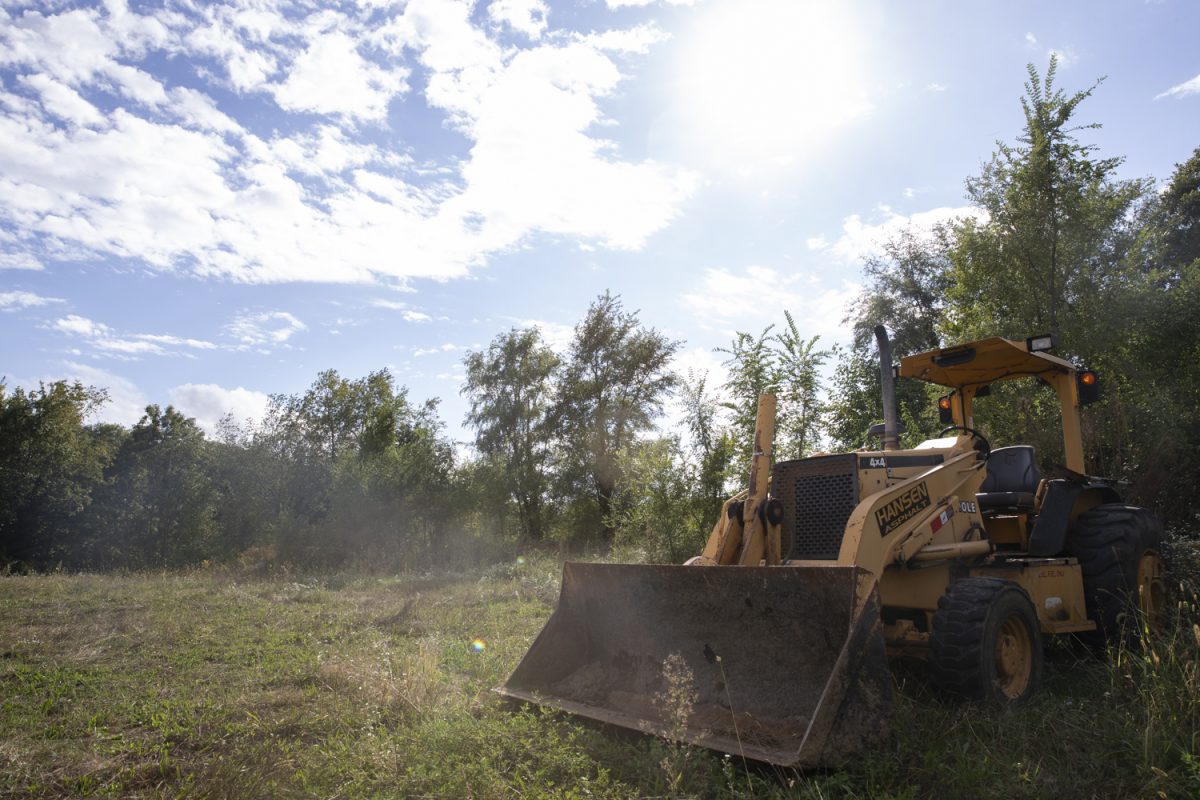The Johnson County Board of Supervisors recently voted, 3-1, designating 56 acres of agricultural and wetland preserve for future residential use. Supervisor Lisa Green-Douglass opposed the decision, and Supervisor Royceann Porter was absent.
This approval is an amendment, indicating the area is suitable for potential residential development but not a rezoning ordinance, which would directly authorize construction.
The county’s future land use map outlines preferred land uses to balance environmental protection, the preservation of agricultural lands, and growing demand for housing, according to the 2018 comprehensive plan. The board of supervisors accepts amendment applications once a year.
Green-Douglass said the 56 acres, located northwest of Iowa City near Tiffin, is ill-suited for residential use. Prior to its new designation, the land was set for conservation.
“It’s an example of sprawl,” Green-Douglass said. “It just doesn’t, to me, feel like it fits in with our philosophy.”
Chairperson Rod Sullivan, who supported the amendment, stated that development at this site is likely inevitable given the rapid growth of Tiffin.
Tiffin is experiencing an annual growth rate of 8.98 percent, with its population increasing by 49.2 percent since the 2020 census.
“When you look at a big map of Johnson County, there are areas that just seem pretty obvious that they’re going to develop over time,” Sullivan said. “We would rather be on the front end of that rather than dealing with it retroactively.”
Green-Douglass’ primary concern was the safety of school buses accessing the site, which is only reachable via Highway 6. Highway 6 falls under the jurisdiction of the Iowa Department of Transportation, so any necessary adjustments would require collaboration between the county and the department.
As a resident of the same school district, Green-Douglass highlighted the lengthy process it took for the Iowa DOT to approve a turn lane to access Clear Creek Amana High School from the highway and the disruption that ensued.
“Try to imagine all those drivers, many of them new drivers and impatient commuters,” Green-Douglass said. “It’s really one of those things that the people that live here are well aware of.”
RELATED: Johnson County Affordable Housing Coalition expands efforts
Dylan Carew, a family member of amendment applicant Jeff Carew, said at the Sept. 12 board of supervisors meeting that his family agreed to the construction of a bike path on the property and will work with the Department of Transportation to support safe bus access.
Green-Douglass also raised concerns that the plot, bordered by Oak Hill Cemetery and commercial parcels, lacks the walkability and access to grocery stores and other amenities necessary to foster a strong community.
“With residential growth, you have to really make sure that you are growing outward from already populated areas rather than just having a place spring up out of the ground,” Green-Douglass said.
Sullivan said he disagrees about the lack of walkability, noting that the plot is less than a mile from Clear Creek schools, which can be reached via Clear Creek trail.
“Kids will literally be able to walk to school from here,” Sullivan said.
Green-Douglass also said that making this land residential will add more homes to the county but will not meaningfully address the county’s need for affordable housing.
“Folks that are going to be buying and building there are not going to be the ones that struggle to find housing they can afford,” Green-Douglass said.
Supervisor V Fixmer-Oraiz said they did not disagree with Green-Douglass’ concerns about the affordable housing crisis in Johnson County, noting that the county’s 2024 comprehensive plan added affordable housing as a top priority.
But, Fixmer-Oraiz said, the amendment to the future land use map is the first step in a long process of zoning and developing land and many of Green-Douglass’ concerns will be addressed down the road.
“We’re really looking into a crystal ball right now, because the future land use map is a big picture thing,” Fixmer-Oraiz said. “We won’t really know anything until they submit their documents for development.”
Fixmer-Oraiz and Sullivan also noted that the creek and wetlands, previously designated as conservation land, will still be protected if the petitioner proceeds with residential development.
“When they do an actual proposal, they’re going to have to account for all those environmental things,” Sullivan said.



